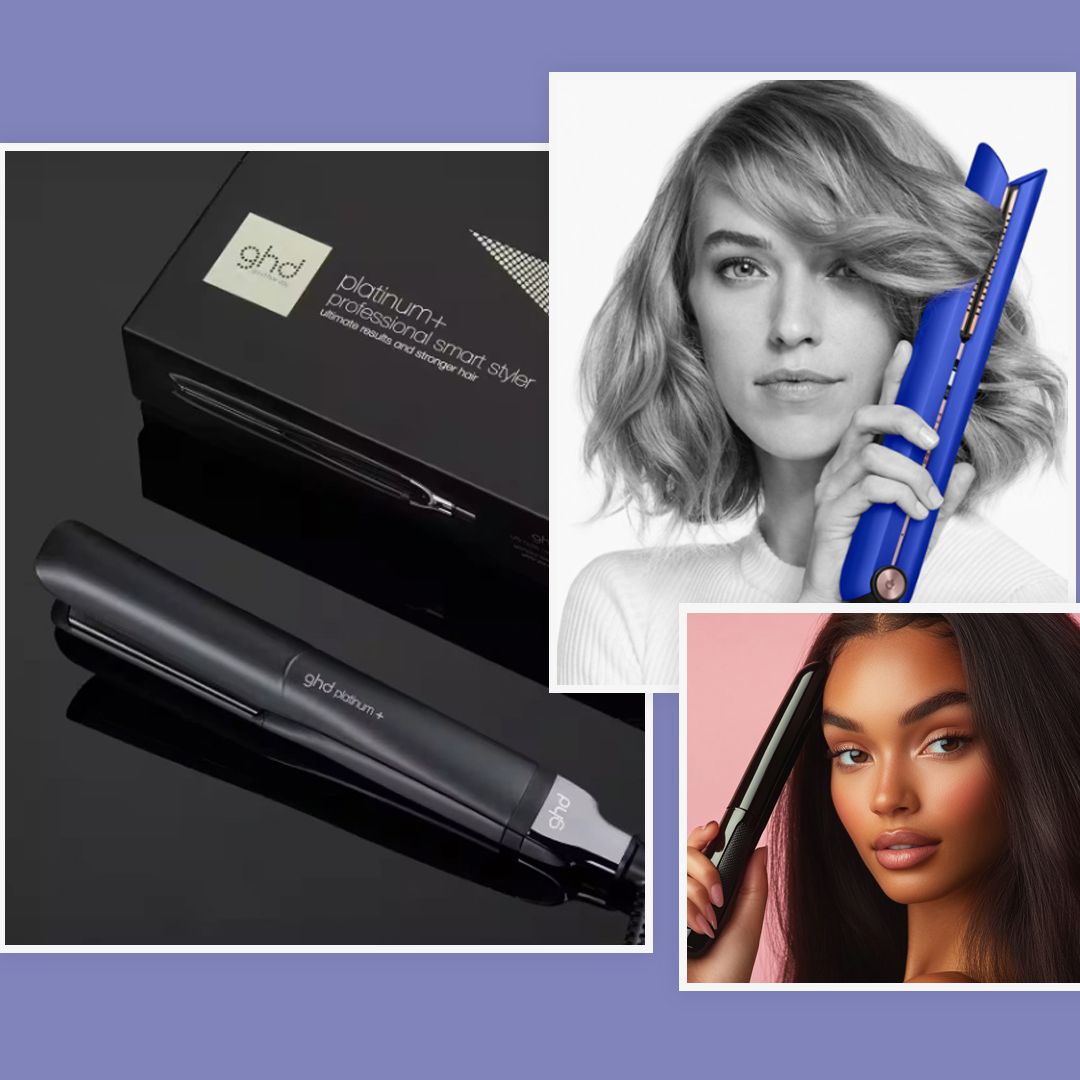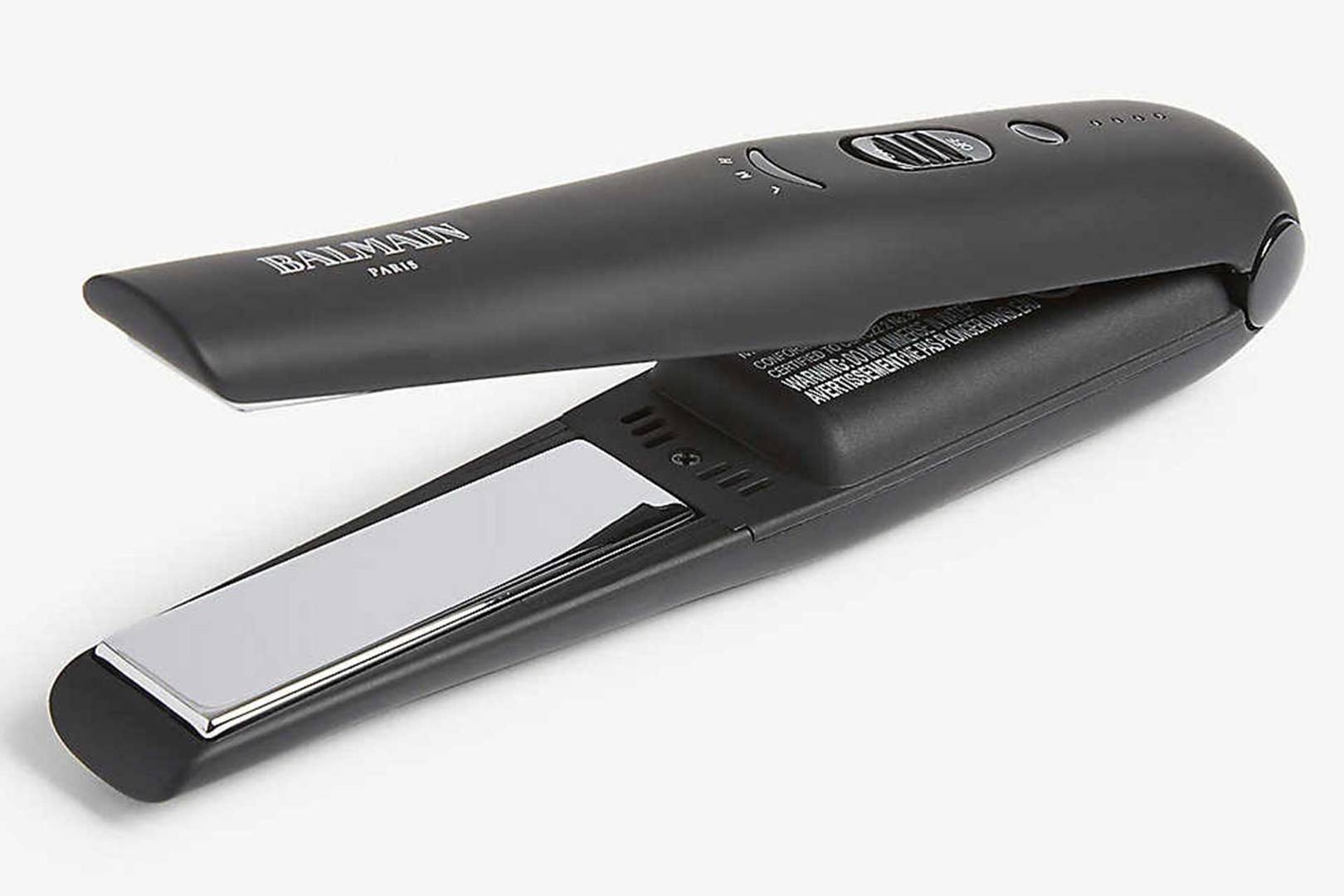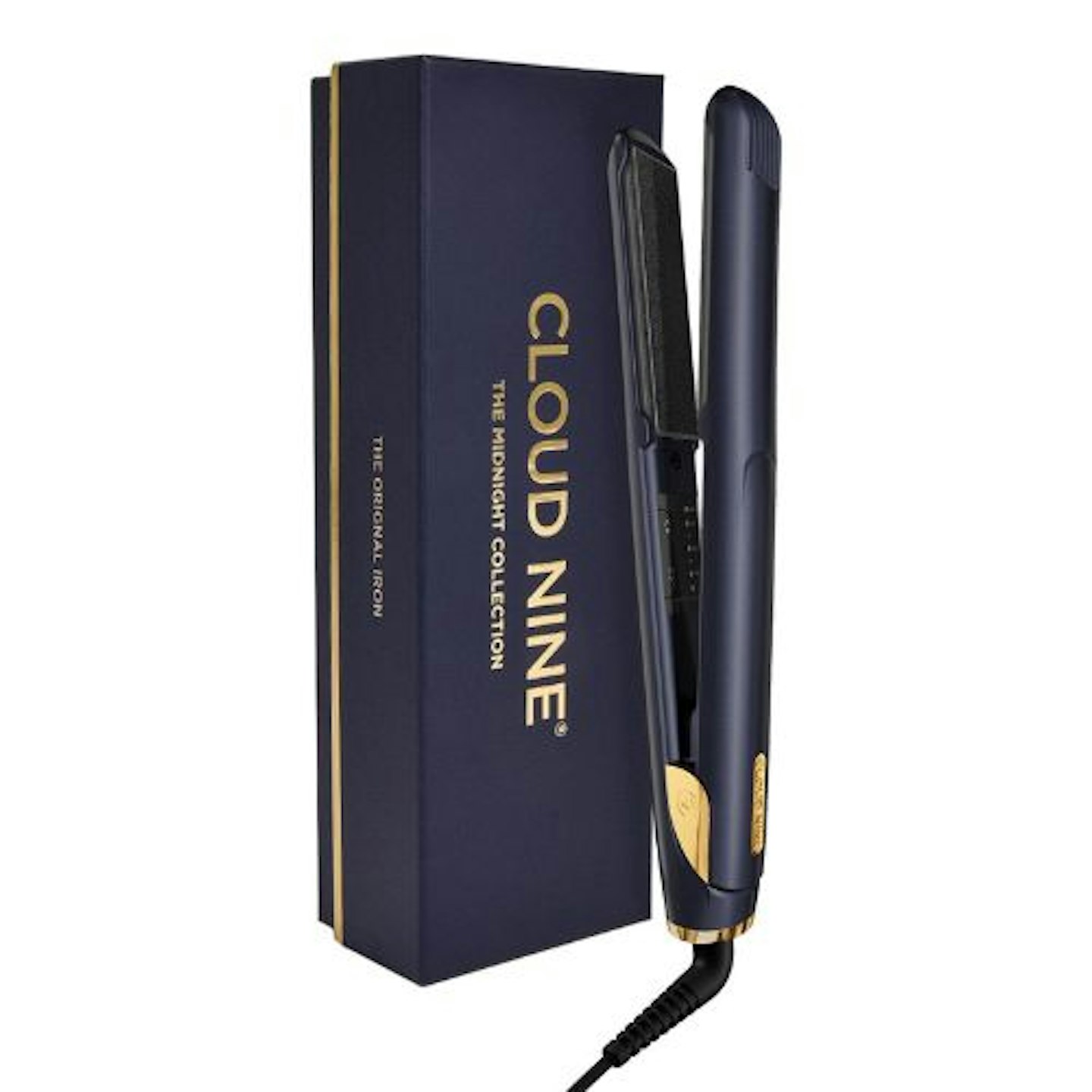Best Straightener For Mixed Hair - Your Guide
Finding the right tool for your hair can feel like a big deal, especially when you have a mix of textures. It's often a bit of a puzzle to get those smooth, sleek looks without causing damage. For those with hair that has a little bit of everything, from waves to curls, choosing a straightener that truly works with your strands, rather than against them, is very important. You want something that respects your hair's unique qualities and helps it look its absolute best.
Different hair types respond in their own way to heat and styling. What might work wonders for someone with fine, straight hair, for instance, could be completely off the mark for hair that boasts a blend of patterns. The idea of "best" here, you know, isn't about some universal standard; it's about what brings out the most good in your particular hair. It's like picking out the best way to do something for *you*, where the choice is really about what serves your individual needs most effectively.
This guide is here to help you sort through the options and figure out what makes a straightener truly "best" for mixed hair. We will talk about what features to look for, what materials are good, and how to use these tools in a way that keeps your hair happy and healthy. It's all about making an informed choice, so you can feel confident in your styling efforts.
- Bob Haircut 2025
- Annie Andrews Congress
- Model With No Belly Button
- Badass Undercut Designs Female
- Jane Seymour Makeup
Table of Contents
- What Makes a Straightener Right for Mixed Hair?
- Are Ceramic or Titanium Plates Better for Mixed Hair?
- How Does Plate Size Affect the Best Straightener for Mixed Hair?
- Which Brands Offer the Best Straightener for Mixed Hair?
What Makes a Straightener Right for Mixed Hair?
When we think about what makes something "best," it often comes down to how well it serves a specific purpose or fits a particular situation. For mixed hair, the idea of a "best" straightener is very much about its ability to handle different textures gracefully. It's not just about getting hair straight, you know, but about doing so without stripping it of its natural moisture or causing undue stress. A truly good straightener for this hair type will often have features that allow for adaptability, acknowledging that not all parts of your hair might respond in exactly the same way. It's a bit like having someone's best interests at heart; the tool should genuinely aim to help your hair thrive.
You might have hair that's wavy near the roots, curly in the middle, and a bit looser at the ends. This kind of variation means a single heat setting or plate type might not be ideal for every section. So, a straightener that lets you adjust things, that gives you control, tends to rise to the top. It's about finding that sweet spot where the tool works with your hair's natural tendencies. Frankly, the best straightener for mixed hair will feel like it was made just for you, allowing you to achieve a smooth finish without a lot of fuss or repeat passes.
The quality of the materials and the way the heat distributes are also big factors. A straightener that heats up evenly and maintains a consistent temperature is going to be much kinder to your hair. Uneven heat can mean you have to go over sections multiple times, which can lead to damage. So, in a way, the "best" tool minimizes the need for extra effort while maximizing results. It's a bit like knowing the best way to approach a task; you want the most effective path.
- Tarte Black Friday Sale 2024
- Jessica Alba Curly Hair
- Megan Thee Stallion Hands
- Piercing Look
- Blackhead Remover Strips
Understanding Your Mixed Hair Texture for the Best Straightener
Before you even think about buying a straightener, it really helps to get a good feel for your hair's unique combination of textures. Mixed hair can present itself in so many different forms, like your hair might be fine in some places and coarse in others, or perhaps you have a tighter curl pattern at the nape of your neck compared to the hair around your face. Knowing these details is pretty important, as it helps you pick a tool that can truly cater to all these variations. It’s almost like knowing your car really well, so you can pick the best one for your driving style from all the cars in a garage.
Think about the porosity of your hair, too. Does it absorb moisture quickly or does it take a while to get wet? Hair that soaks up water fast might also be more prone to heat damage, meaning you'll need a straightener with very precise temperature controls. On the other hand, hair that resists water might need a bit more heat to achieve the desired smoothness. This kind of personal insight is, in some respects, the first step to discovering the best straightener for mixed hair, because it makes you aware of what your hair truly needs.
Consider how your hair reacts to humidity. Does it puff up the moment there's moisture in the air? If so, a straightener with ionic technology or steam features might be a better choice for you. These elements help to seal the hair's outer layer, which can keep frizz at bay. So, understanding these reactions helps you pick a straightener that supports your hair's overall health and keeps it looking good, no matter the weather. It's about finding the best tool that works with your hair's natural behavior.
Key Features to Look For in the Best Straightener for Mixed Hair
When you're looking for the best straightener for mixed hair, there are a few things that really stand out. First off, variable temperature settings are quite essential. You need to be able to adjust the heat to match different parts of your hair. For finer sections, a lower temperature might be just right, while thicker or curlier bits might need a little more warmth. It's about having that control, you know, so you can be gentle where needed and more assertive where it counts.
Floating plates are another feature that can make a big difference. These plates move a little bit, which means they maintain even contact with your hair as you glide the straightener down the strand. This helps prevent snagging and ensures that heat is distributed uniformly, reducing the need for multiple passes. It's like having a tool that adjusts to your every move, making the process smoother and more effective. This kind of flexibility is pretty much what makes a straightener "best" for hair with varied textures.
Then there's the material of the plates themselves. We will talk more about this soon, but generally, ceramic or tourmaline coatings are often recommended because they provide a smooth glide and help distribute heat evenly. Some tools also come with features like automatic shut-off, which is a nice safety touch, and swivel cords, which make maneuvering the tool much easier. These small details, actually, add up to a much better user experience and contribute to what makes a straightener truly the best for mixed hair.
Are Ceramic or Titanium Plates Better for Mixed Hair?
This is a question many people ask when looking for the best straightener for mixed hair. Both ceramic and titanium plates have their own strengths, and the "better" choice really depends on your specific hair needs and preferences. It's a bit like deciding which type of car is best for a particular trip; both might get you there, but one might be more comfortable or efficient for your journey.
Ceramic plates are known for their ability to heat up quickly and distribute heat very evenly. They tend to create a smooth surface that glides through hair without pulling or snagging. For mixed hair, this even heat distribution is quite beneficial because it helps prevent hot spots that could damage certain sections while leaving others untouched. Ceramic is also often seen as a gentler option, which is good if your hair is a little more delicate or prone to damage. It's often the go-to for daily use, or for hair that doesn't need extreme heat to get straight. In some respects, it's about providing a consistent, gentle approach.
Titanium plates, on the other hand, can reach higher temperatures and transfer heat more quickly. They are very durable and often lighter than ceramic plates. For hair that is very thick, coarse, or particularly resistant to straightening, titanium can be quite effective because it gets the job done faster with fewer passes. However, because they heat up so intensely, you need to be more careful with titanium straighteners, especially on finer or more fragile sections of mixed hair. It's about finding the right balance of power and care, you know, to ensure you're getting the best results without overdoing it.
The Heat Factor - Finding the Best Straightener for Mixed Hair
The amount of heat you use is, frankly, one of the most important things to consider when picking the best straightener for mixed hair. Too much heat can cause serious damage, like breakage and dryness, while too little heat might not give you the smooth finish you are after. It's a delicate balance, and finding the right temperature for your specific hair type is pretty much key.
For hair that's finer or more prone to damage, a lower temperature setting is usually the way to go. You might start around 250-300 degrees Fahrenheit and see how your hair responds. For thicker or coarser sections, you might need to go a bit higher, perhaps up to 350-400 degrees. However, it's very rare that you would need to go above 400 degrees, even for the most resistant hair. Remember, the goal is to get the hair straight with the least amount of heat possible, to protect its health. This is the best way to approach heat styling, to be honest.
Many of the best straighteners for mixed hair will have digital temperature displays, which let you see and adjust the heat precisely. This level of control is really helpful because it takes the guesswork out of styling. Some even have sensors that adjust the heat based on your hair's condition. It's about being smart with your heat, you know, and letting the tool do some of the work to keep your hair looking its best.
How Does Plate Size Affect the Best Straightener for Mixed Hair?
The size of the plates on a straightener plays a pretty big role in how effective and easy it is to use, especially for mixed hair. It's like picking the best tool for a specific job; a small screwdriver won't work well for a large screw, and vice versa. The right plate size can make a huge difference in your styling experience and the final look of your hair.
For people with shorter hair, or those who want to style bangs or smaller sections, narrower plates (think 1 inch or less) are often the best choice. They allow for more precision and can get closer to the roots without burning your scalp. If your mixed hair has a lot of different curl patterns, and some sections are quite short, a narrower plate might give you the control you need to smooth out those tricky areas. It's about getting into those tighter spots, you know.
If your hair is longer or very thick, wider plates (1.5 inches or more) can save you a lot of time. They can cover larger sections of hair at once, which means fewer passes and a quicker styling session. This can be especially good if you have a lot of hair to get through. However, very wide plates might not be as good for creating curls or waves, if that's something you also like to do with your straightener. So, it's about balancing efficiency with versatility when considering the best straightener for mixed hair.
Beyond Plates - Other Qualities of the Best Straightener for Mixed Hair
While the plates themselves are a big part of what makes a straightener good, there are other features that can really elevate a tool to being the best straightener for mixed hair. For instance, some straighteners come with an automatic shut-off feature, which is a great safety measure. If you're someone who often worries if you left your styling tool on, this can bring a lot of peace of mind. It's a bit like having a built-in safeguard, you know.
A swivel cord is another small but mighty feature. It lets you move the straightener around freely without the cord getting tangled or twisted. This makes styling much more comfortable and less frustrating, especially when you're trying to reach those awkward spots at the back of your head. It's about making the whole process as smooth as possible, which really contributes to a better experience.
Some straighteners also include ionic technology, which releases negative ions to help seal the hair's outer layer, reduce frizz, and add shine. For mixed hair, which can sometimes be prone to frizz, this can be a real game-changer. It helps to keep your hair looking sleek and polished, even in humid conditions. This kind of thoughtful addition can really make a straightener stand out as being the best for your particular hair needs.
Which Brands Offer the Best Straightener for Mixed Hair?
When you're looking for the best straightener for mixed hair, certain brands have earned a good reputation for making reliable and effective tools. While what's "best" can be a very personal thing, some companies consistently produce straighteners that get high marks for their performance and features. It's a bit like how some car manufacturers are known for making very dependable vehicles; you generally know what to expect.
Brands like GHD, BaBylissPRO, and Dyson are often mentioned in conversations about high-quality hair tools. GHD, for instance, is known for its consistent heat and ability to glide smoothly through hair. BaBylissPRO offers a range of options, including ceramic and titanium plates, that cater to different hair types and needs. Dyson, with its unique design, aims to reduce heat damage while still providing effective straightening. These brands, you know, have invested a lot in technology to make their tools work well.
However, you don't always have to spend a lot to find a good straightener. There are also many reputable brands that offer more budget-friendly options that still perform very well for mixed hair. Remington and Conair, for example, have models that provide good heat control and plate materials without a high price tag. It's about doing a little research and reading reviews to see what other people with similar hair types have found to be the best for them. The best straightener for mixed hair is ultimately the one that meets your needs and fits your budget.
Caring for Your Hair After Using the Best Straightener
Using the best straightener for mixed hair is just one part of keeping your strands looking good. What you do before and after styling is, frankly, just as important for maintaining hair health. It's about a whole routine that supports your hair, not just one step. Think of it as a complete care package for your hair.
Before you even turn on your straightener, applying a good heat protectant spray is a must. This creates a barrier between your hair and the heat, helping to minimize damage. It's a bit like putting on sunscreen before going out in the sun; it's a protective measure that really helps. This step is pretty much the best way to prepare your hair for styling.
After straightening, using a light serum or hair oil can help to add shine and control any lingering frizz. This also helps to seal in moisture and keep your hair feeling soft. And don't forget to give your hair a break from heat styling sometimes. Letting your natural texture shine through or opting for heat-free styles can give your hair a chance to recover and stay healthy. This kind of consistent care is, in some respects, what truly makes for the best hair over time.
Article Recommendations
- Ideas For Black Hair Color
- Shampoo For Dry Hair And Frizzy Hair
- Brunette Highlights
- Unique Hairstyles Women
- Best Movies To Sleep To



Detail Author:
- Name : Laurine Bartell
- Username : mdickens
- Email : hirthe.moses@gerlach.org
- Birthdate : 2006-03-07
- Address : 9547 Oberbrunner Freeway Apt. 778 Aidamouth, SC 59026-8791
- Phone : 1-786-955-3450
- Company : Gottlieb PLC
- Job : Brokerage Clerk
- Bio : Sit quia et enim eum provident repellat. Minima consequatur recusandae nostrum iste. Aliquid consectetur aut ut sint qui in odit. Quaerat omnis aspernatur sit vitae.
Socials
linkedin:
- url : https://linkedin.com/in/jackeline_haley
- username : jackeline_haley
- bio : Praesentium esse in consequatur qui.
- followers : 4146
- following : 1034
instagram:
- url : https://instagram.com/jackeline_haley
- username : jackeline_haley
- bio : Ipsa atque aut aut. Repudiandae sint est sit facilis. Sint quia velit est soluta.
- followers : 3717
- following : 723
twitter:
- url : https://twitter.com/jackeline_haley
- username : jackeline_haley
- bio : Quo aut dicta repudiandae adipisci quae. Animi non dolores esse est reprehenderit facere.
- followers : 2986
- following : 1966